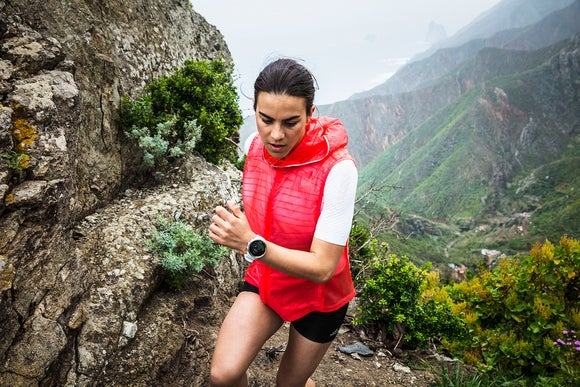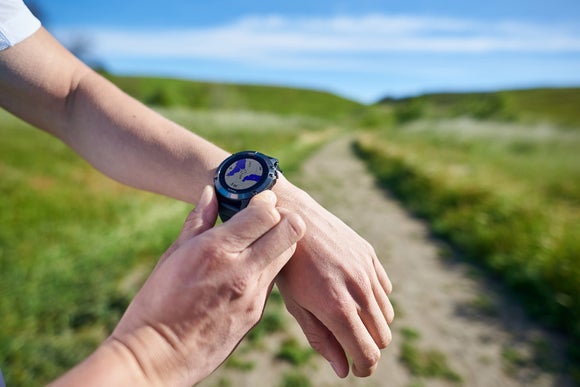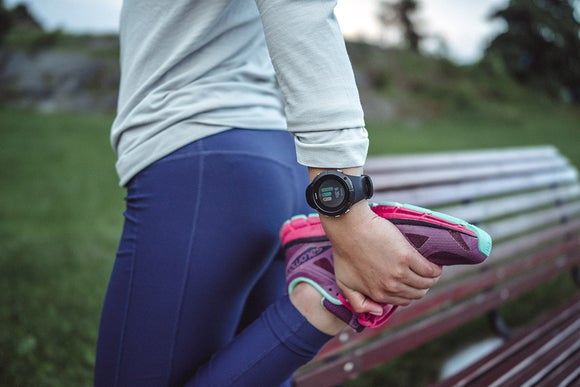GPS Watch Buying Guide
How to Choose the Best GPS Watch for Running

A GPS watch serves as a tool to help you get the most from your run and can elevate your training. There are several basic functions that all running GPS watches have, but many offer dozens of extra features in addition. Sifting through the countless options available can be overwhelming, so in this guide we'll break down the basics to help you find a watch that satisfies all of your needs. First, let's take a look at some of the features available in GPS watches and see how they could benefit your run.
Features of All Running GPS Watches
All GPS watches are able to perform the following basic functions:
| Measure Speed and Distance | Shows how fast and far you've run during your workout. |
| Clock | Displays the day and time and can be used as a daily watch. |
| Workout History | Stores previous workouts so you can access the information after your run. The amount of memory will vary depending on how advanced the watch is. |
| Minimum Battery Life | Every GPS watch at Running Warehouse Australia features at least 5 hours of battery life while in GPS mode. |
| Rechargeable Battery | Can be recharged via USB or alternate charger. |
| Automated Laps | Automatically marks each lap at a preset distance (usually miles or kilometres), so you don't have to manually mark each lap. |

Other Common Features
Many GPS watches add one or more of the following functions:
| Data Upload | Offers the option to transfer your workout history to an online platform for more in-depth analysis and additional information about your run. Most watch manufacturers have their own online training program, but many also offer the ability to transfer data to common programs such as Strava or RunKeeper. |
| Customisable Screens | Allows you to change the type and quantity of information displayed on the screen during your run, making sure that you see all the data you need and nothing you don't. Some even allow you to create multiple "pages" of info that you can scroll through to view even more data while you're running. |
| Heart Rate Monitor (HRM) | Heart rate tracking is useful for measuring the intensity of your workout. A lot of GPS watches offer a built-in optical HRM that measures your pulse at the wrist. Another option is to purchase a compatible chest strap HRM which provides the most accurate reading. |
| Auto Pause | Pauses the workout when you stop running. This can be helpful when you're running in an area with lots of traffic lights, so you don't have to keep manually starting and stopping the workout. |
| Activity Tracking | Records your movement and daily activity such as steps taken, calories burned, and distance travelled. Some even track quality of sleep and notify you to get up and move if you've been sitting for too long. |
| Run/Walk Alerts | Allows you to customise time intervals that prompt you to run or walk during a workout. The watch typically accepts an unlimited number of intervals to alternate between running and walking. |
| Accelerometer | If you're running indoors, the watch is unable to connect to GPS satellites, but a built-in accelerometer can still track your workout. It is able to track distance and speed by measuring your arm swing, thereby eliminating the need for a foot pod or other device when running indoors. |
| Intervals | Incorporates simple or advanced workouts, where you can specify how far and fast you want to run for each interval. More advanced workouts include multiple paces and distances in a single workout. |

Advanced Features
Some more advanced GPS watches include one or more of these training features:
| Track Multiple Types of Workouts | If you're looking to track multiple types of workouts such as swimming and cycling in addition to running, several GPS watches allow different workout modes. Multisport watches offer the ability to perform multiple types of activities in one workout, and also offer features like transition timing and advanced timing info for each activity. Less advanced watches still allow customisable screens depending on the sport but don't offer additional training data for other sports besides running. |
| Training Estimates | When paired with a HRM, these GPS watches provide an in-depth analysis of the runner's training load. For example, some watches can predict the runner's finishing time for a race time based on their current training, and can also advise the runner on how long it will take the body to recover after a specific workout. |
| Navigational Features | Offers features like a built-in electronic compass, the option to reroute back to where you started, and the ability to load pre-designated courses. Watches with these features are perfect for trail runners and outdoor enthusiasts. |
| Altitude | Displays the current altitude and the elevation gained during a given workout. These watches either use elevation data gathered from GPS coordinates or include a barometric altimeter for more accurate elevation data. |
| Long Battery Life | While the battery life will vary between each model, some GPS watches offer particularly long battery life (over 20 hours) while in GPS mode. These are generally more advanced watches and have a higher price tag. |

How to Choose Between the Options
No one wants to spend more money than they need to, and there are a lot of watches that provide more features than you need. So how do you know exactly what you need from a watch? Here are a few steps to help you decide which watch is best for you:
1. Decide what information you want the watch to give you
- Just distance, pace, and time? Choose a basic or mid-level watch.
- Heart rate data? Choose a watch with an HRM.
- Daily activity tracking? Choose a basic watch that offers activity tracking.
- Advanced training info? Choose a mid-level or advanced watch.
- Training data on multiple sports or activities? Choose a multisport watch.
2. Decide how much you want to spend
Entry level or basic GPS watches sell for under $400 and are ideal for beginner runners or runners simply looking to record distance and pace without many additional features. They typically include:
- Basic GPS watch functionality
- One or two additional features such as auto pause or activity tracking
Mid-level watches cost around $700 and are ideal for intermediate runners or runners looking to gather data from their runs to ensure that they are getting the most from their training. Common functions include:
- Basic GPS functionality
- Additional features such as a built-in accelerometer, run/walk alerts, training estimates, and interval training options
- Longer battery life
Advanced watches or multisport watches cost around $1000 or higher and are ideal for runners looking for in-depth training data for multiple sports. Advanced features include:
- Basic and advanced running GPS watch functionality
- Most or all advanced features offered by that brand, and advanced training data when paired with a HRM
- Modes for different activities as well as additional training data for non-running activities
- Longest battery life
- Triathlon-specific settings such as transition timing
Summary
Ultimately, when shopping for a GPS watch, it's important to consider exactly what features you need, as well as what other functions you may want to use in the future. You should definitely do some research before making your final decision. There's plenty of helpful information, comparisons, and reviews on the internet, and a quick browse online can save you time, money, and future frustration.